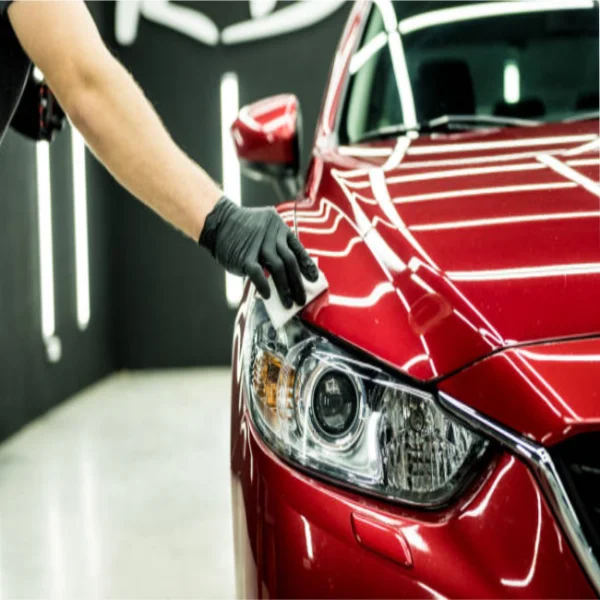How to Fix Minor Car Dents Without Repainting?
Dealing with a dent in your car can be frustrating, but don’t worry—you don’t always need a full repaint job to make your car look as good as new. Sometimes, those minor dents can be fixed quickly and effectively with a few simple steps, saving you both time and money. Whether you’re a DIY enthusiast or just want to avoid costly auto body shop repairs, I’ve got some great tips for you. Let’s dive in!
1. Understand the Type of Dent You Have
Before jumping into repairs, it’s important to figure out what kind of dent you’re dealing with. Minor dents are usually caused by small accidents like hitting a shopping cart, a door ding, or even a low-speed fender bender. The key is that the damage doesn’t go beyond the paint—if the paint is cracked or chipped, a repaint might be unavoidable.
But if the paint is still intact, you’re in luck! Now, let’s move on to the fun part.
2. Prepare Your Tools and Materials
You don’t need a garage full of equipment to fix minor dents at home. In fact, I’m going to show you how you can fix them using tools you probably already have or can easily find. Here’s what you’ll need:
- Hair dryer (or heat gun)
- Compressed air or dry ice
- A plunger or suction cup (for larger dents)
- A dent puller (optional)
- A soft cloth or microfiber towel
- Masking tape and a plastic sheet (if you want to protect the surrounding areas)
Tip: Always be careful when using heat, especially around delicate areas like bumpers or grills. You don’t want to melt or damage any surrounding parts!
3. The Hair Dryer and Compressed Air Method
If you have a small dent on a flat surface (like a door panel), you can use heat and cold to create a popping effect. Here’s how to do it:
- Heat the Dent: Use your hair dryer or heat gun to warm up the dent. Hold it about 6-8 inches away from the surface and heat the area for 30 seconds to a minute. The heat will soften the plastic or metal around the dent, making it easier to manipulate.
- Cool it Down Quickly: Now, here’s where the magic happens. Grab a can of compressed air (or some dry ice, if you have it) and quickly spray it on the heated area. The sudden temperature change will cause the dent to pop back out as the metal contracts.
This technique works great for small to medium-sized dents, and it’s pretty satisfying to watch it pop out!
4. Using a Plunger or Suction Cup for Larger Dents
For slightly larger dents, you can use a suction cup or a plunger to pull the dent back into shape. You’ve probably seen this trick in DIY videos—here’s how you can do it too:
- Clean the Area: Before you start, make sure the area around the dent is clean. Use a soft cloth to wipe away any dirt or debris. This will help ensure a good seal with the plunger or suction cup.
- Apply the Plunger or Suction Cup: Place the plunger or suction cup directly over the center of the dent. Press it firmly so you get a good grip.
- Pull it Out: For the plunger, slowly and steadily pull it back to see if the dent begins to pop out. If you’re using a suction cup, you can pull it back gently to create the same effect. If the dent is shallow, it should pop right out.
5. Using a Dent Puller Kit (Optional)
If you’re looking for something a little more advanced, you might want to invest in a dent puller kit. These are available online or at your local automotive store. A basic dent puller kit usually includes a special adhesive, tabs, and a pulling tool. Here’s how you can use it:
- Clean the Area: As always, start by cleaning the dented area.
- Attach the Pulling Tab: Apply the adhesive tab to the center of the dent, making sure it’s securely stuck.
- Attach the Puller: Use the pulling tool to attach to the tab. Slowly begin pulling until the dent starts to pop out.
- Remove the Tab: Once the dent is gone, remove the tab by following the instructions. Be sure not to leave any adhesive residue.
6. Finishing Touches
Once the dent is fixed, you’ll want to make sure everything looks flawless. If you’ve used any heat methods, you might notice some mild discoloration or marks around the area. Here are some tips for finishing things up:
- Polish the Surface: Use a microfiber cloth and some automotive polish to buff out any imperfections. This will restore the car’s shine and help blend the repair area with the rest of the panel.
- Touch Up Paint (if necessary): If there are any small scratches or imperfections, you can use touch-up paint to cover them. Just be careful to match the exact color of your car.
7. When to Seek Professional Help
Not all dents can be fixed without repainting, and some may require professional attention. If your dent is deep, located in a complex area (like around curves), or if you’re not comfortable with the DIY methods, it’s always a good idea to seek expert help. Fortunately, you can always reach out to us at HaseebAutomotive.com for guidance on more complex dent repairs.
Fixing minor dents doesn’t have to be a huge ordeal. With the right tools and a bit of patience, you can restore your car’s appearance without needing a full repaint job. Whether it’s using heat and cold, a plunger, or a dent puller kit, you’ve got the power to tackle those dents head-on. And if you’re ever unsure or need more assistance, just head over to HaseebAutomotive.com for more tips and professional help.
Remember, a little DIY can go a long way in keeping your car looking sharp and saving you money!



Leave a Reply